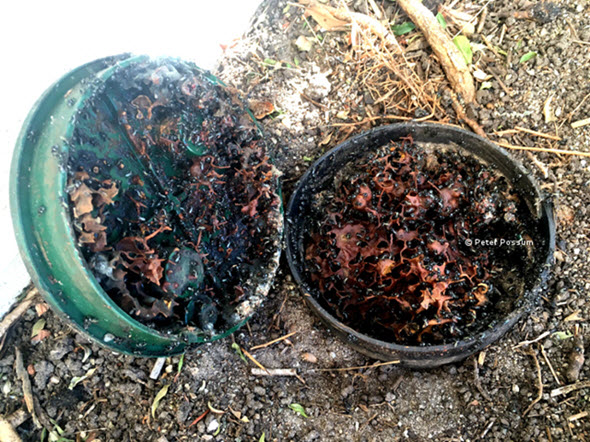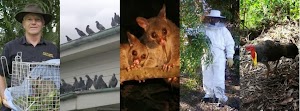The native stingless bees prefer to build their nest inside a hollow log or a large crevice in a tree. They need somewhere that is slightly humid, not damp and insulated from fluctuations in temperature. In urban areas their opportunities to find holes in trees are limited, so they make other choices that may not be popular with home owners.

Stingless bee removal
Small gaps in garden retaining walls made from timber sleepers are popular with the bees, as well as water meter boxes. Occasionally they will select gaps in brickwork and build a nest inside the wall of a house or another cavity near a building.
Sometimes people are concerned by the buzzing and activity. If you can accept that they are like flying ants and harmless, there is no danger. But often when people realise they are bees, there is a desire to remove them. Remember they cannot sting you, have no venom and the only defence a stingless native bee has is to try to bite (really no more than a small nip).
These bees are native to Queensland and important pollinators of native plants. So we will always try to persuade home owners to accept their insect tenants.
Unfortunately, the native bees sometimes choose to nest in places that are not convenient, especially if they are flying in front of doorways. Native bee nest removal can be arranged if their cavity can be opened; for example, inside a water meter box or behind some timber work that can be removed. The nest and its queen can be transferred to a wooden bee box/hive and relocated. In that case it is essential to remove the centre of the nest, called the brood with all its eggs, as well as many of the adult native bees with some of the pollen and honey. Any remnants of the hive must then be scraped out so they do not attract a new group of bees to move into the vacant space.
Only if it is impossible to get into the nest, to remove the brood, as a last resort it may be necessary to use chemicals to remove the whole colony. Usually an insecticide powder is blown into the cavity. It is preferable to then seal up the entry holes to exclude other insects who will want to come and eat the honey.
If you have any bee problems give us a call and we can explain the best solution for your problem.







